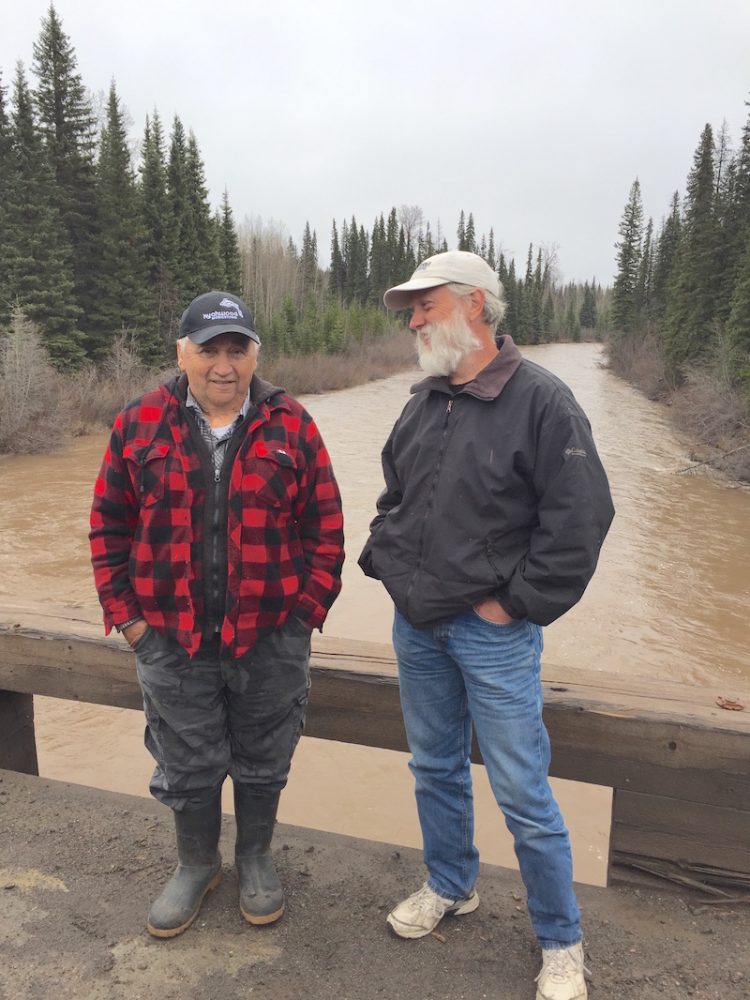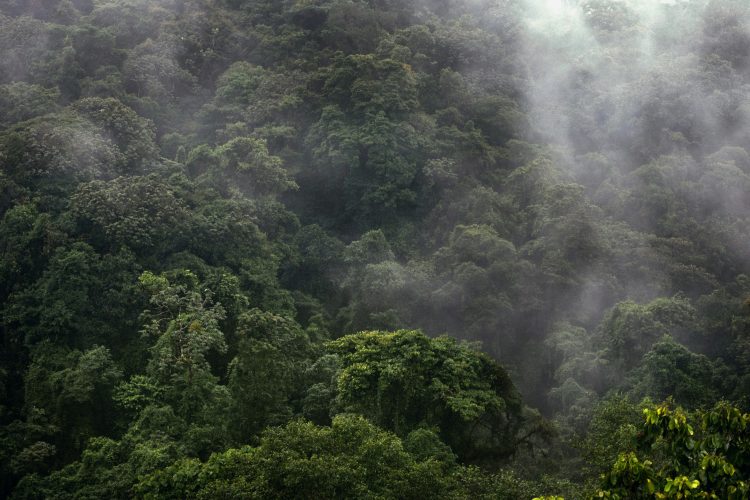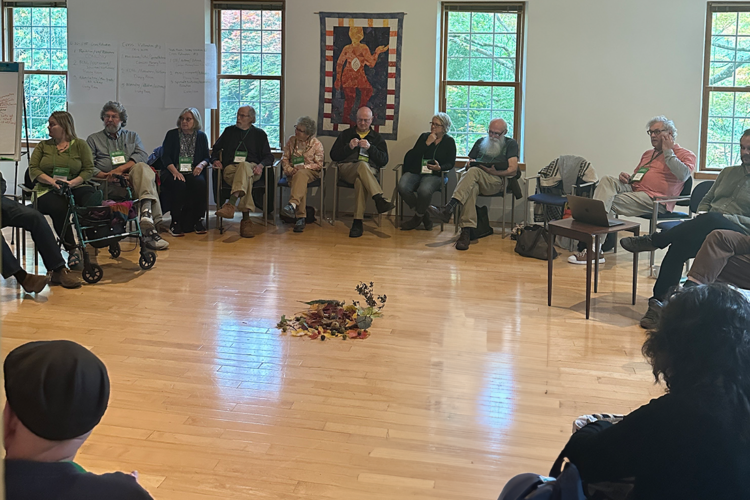A Fight for The Yintah
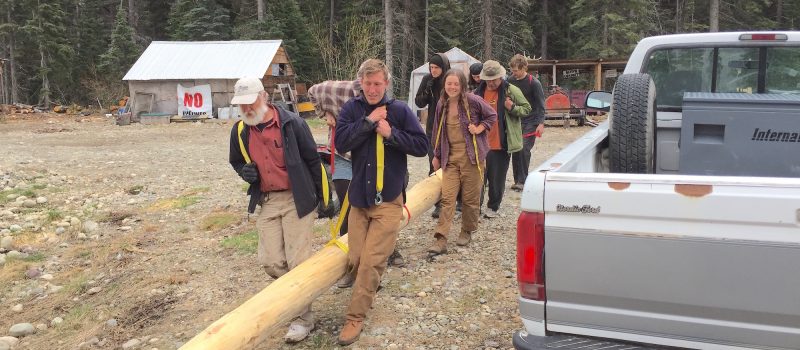
By Daniel Kirkpatrick.
THE THIRTY OF US STOOD in a quiet circle in the gravel on a sunny, cool morning. Wood smoke rose toward the sky from the adjacent lodge, and boreal forests surrounded the clearing. A First Nations elder, Lht’at’en, spoke in her Wet’suwet’en dialect, offering a prayer before the morning meal. As she invoked the spirits of the land and of the ancestors, two eagles appeared, flew a loop directly overhead, and flew off.
It was the only time I had seen eagles at the Unist’ot’en Healing Lodge, in forty or so days working there as a volunteer. The morning circle is a tradition in which Indigenous and settler people gather before each meal to offer blessings and check in with each other. The land is remote enough that wildlife sightings are common. But eagles? Circling directly over our group? It was hard not to imagine that Lht’at’en had called the eagles forth as part of her blessing.
At least three petrochemical giants plan to build pipelines through the territory of the Unist’ot’en people. These lines would carry liquefied natural gas and/or tar sands oil from Alberta to the British Columbia (BC) coast for export to Asia. Bitumen is a dense sludge found under the vast quilt of forests, wetlands, and bogs of Alberta’s north country. Natural gas is a byproduct of bitumen production. Since bitumen is surface-mined, it is one of the dirtiest and most expensive forms of fossil fuel.
For the companies to make money, the product must get to market. The proposed pipelines would each cross hundreds of kilometers of wild land, effectively turning forests into industrial sites. And there is no way to ensure that there won’t be spills.
Easements for much of the route have been secured from communities that have yielded to intense economic pressure from the oil companies. However, the Unist’ot’en people refuse to cooperate. The hereditary chiefs of this clan recognize the irreversible impacts upon their land and livelihood that fossil fuel development promises. And since they have never signed away their land rights, the Yintah, or vast sacred territory of their clan, is theirs to defend.
The Yintah is a forested, foothill region on the east slope of British Columbia’s Coast Range, roughly halfway between the town of Prince George and the BC coast. The woodlands are primarily spruce, the rivers are cold and clean, and wild animals, including bear, moose, deer, marten, beaver, and grouse, are abundant. Some logging has taken place in the area, but the remoteness of the territory has left it largely pristine. The Unist’ot’en plan to keep it that way.
Starting around 2009, a group of committed First Nations people erected a gate across the primary road access into the Yintah. Led by the Hereditary Chiefs and their spokesperson, the tremendously courageous Freda Huson, the Unist’ot’en people began reasserting their territorial rights. Once the claim was established, they began building a settlement directly in the surveyed path of the pipelines. A cabin and traditional pit house were constructed, followed by a bunkhouse in 2014 and now a large healing lodge, built in three phases in 2015, 2016, and 2017.
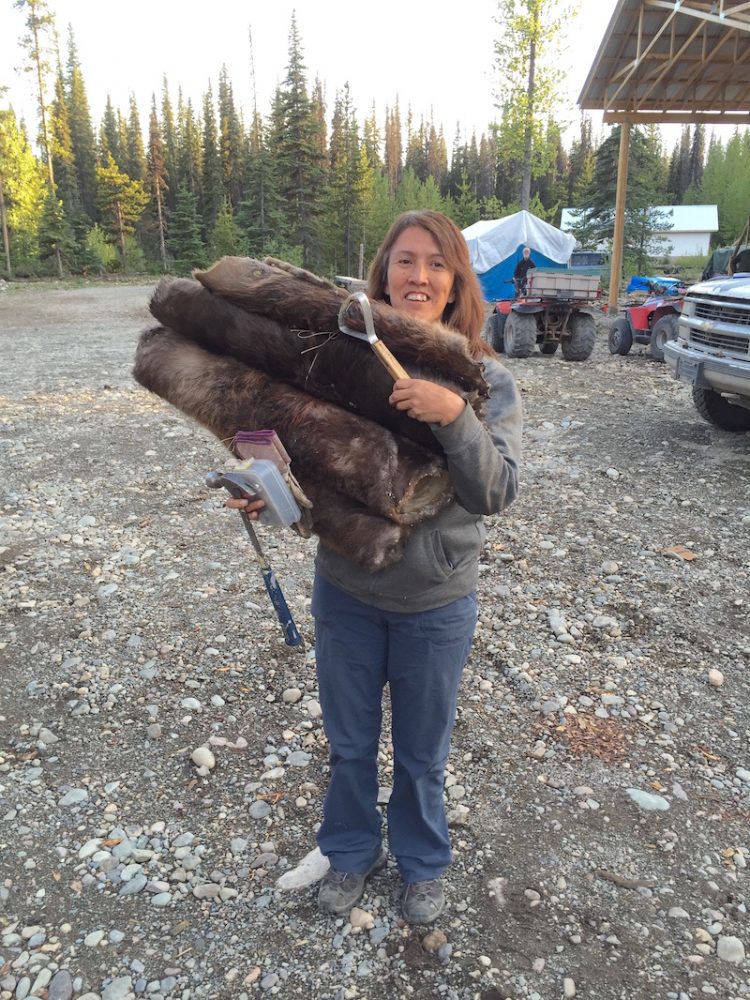
Nearly all the labor and supplies have been donated. As a volunteer, I valued the opportunity to spend time with Unist’ot’en elders, and to work alongside volunteer carpenters from BC, Washington, California, the Navajo Nation, Sweden, Israel, Japan, and many other locales. This disparate group shared a commitment to Indigenous rights—and to informing the petrochemical companies that the environmental and cultural cost of their pipelines is unacceptable.
The diversity of the volunteer work crew makes for a delightful job site. Unlike in commercial construction, impromptu breaks often occur to allow for discussions of gender rights, cultural identity, or the future of capitalism. And since many of the workers are new to carpentry, much time is spent teaching, helping, loaning, and borrowing. In this unusually affirming context, the Unist’ot’en Healing Centre rose from the ground to become a powerful symbol of First Nations’ sovereignty and Indigenous refusal to yield land to development.
The lodge is becoming a place where Unist’ot’en people can come to recover from whatever befalls them, with the beauty of the Yintah and the traditional practices of living on the land complementing therapy as healing forces. Having spent time there as a settler ally, I can attest to the amazing courage of the Unist’ot’en and the powerful peace that emanates from the wild beauty of the Yintah.
Daniel Kirkpatrick is an educational consultant and writer residing in Bellingham, Washington, and the Canadian Gulf Islands.
